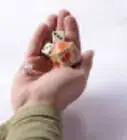This article was co-authored by wikiHow Staff. Our trained team of editors and researchers validate articles for accuracy and comprehensiveness. wikiHow's Content Management Team carefully monitors the work from our editorial staff to ensure that each article is backed by trusted research and meets our high quality standards.
This article has been viewed 257,458 times.
Learn more...
This simple dice betting game is more often played on the sidewalk than in a casino. Played with three dice, this game is called Dice 4-5-6 after the highest scoring roll, or C-Lo.
Steps
Playing with a Banker
-
1Select a banker. If more than one player wants to start as the banker, have them roll dice. The highest roller is the banker for the first round. The banker has slightly better odds of winning, but puts up a larger stake.
-
2Set the stake. The banker puts up a bet of any amount. If you like, your group can decide on a minimum stake.Advertisement
-
3Match the stake. Each other dice player gets a chance to match some or all of the stake. Move on once the full stake is matched, or when no one else wants to put up a bet. Here are a couple examples:
- Example 1: The banker puts up $25. Player one matches $15 of that stake, and player two puts up $10. The full $25 stake is matched, so no one else can bet. Continue to the next step.
- Example 2: The banker puts up $100. Player one puts up $20, player two puts up $40, and no one else wants to bet. Since only $60 has been matched, the banker keeps the remaining $40 of his stake. Continue to the next step, playing for the $120 still on the table.
-
4Roll for an automatic win or loss. Once all bets are made, the banker rolls three dice. In most versions of this game, these results immediately end the round:[1]
- 4 + 5 + 6 exactly ("c-lo"): automatic win. Banker takes all the money.
- Any three of a kind ("trips"): automatic win.
- Any pair + 6: automatic win. (For example, 1 + 1 + 6 or 3 + 3 + 6.)
- 1 + 2 + 3 exactly: automatic loss. Banker pays out to each player, matching their stakes.
- Any pair + 1: automatic loss. (For example, 4 + 4 + 1 or 6 + 6 + 1.)
-
5Find the score for other results. If the banker didn't roll one of the combinations above, the round continues. Find the banker's score:
- Any pair + a 2, 3, 4, or 5: the banker's score equals the value of the third die. (For example, 1 + 1 + 4 gives a score of 4. A roll of 5 + 5 + 3 gives a score of 3.)
- Any other result: the banker rolls all three dice again until she gets a "decision roll:" a score, an automatic win, or an automatic loss.
-
6Try to beat the banker's score. If the banker rolled a score (not an automatic win or loss), each player gets a chance to roll three dice to try and beat it. This uses the same scoring rules, but only affects that player's stake:
- If a player rolls an automatic win or a score higher than the banker's, the banker pays that player an amount equal to the player's stake.
- If a player rolls an automatic loss or a score lower than the banker's, the player gives his stake to the banker.
- If a player rolls a score equal to the banker, no money changes hands.
- If a player rolls any other result, he re-rolls until one of the above happens.
-
7Start the next round. Once each player has rolled (or the banker rolled an automatic result), the round is over. If money is still on the table due to a tie, it stays on the table unless the banker changes (see below). If the banker changes, the betting players pick up their stakes instead. Start the next round, using the same rules.
-
8Switch bankers. Some groups rotate the banker position clockwise each round.[2] Others let the banker keep the position until someone rolls a 4-5-6. That person then takes over the banker position starting next round. The old banker becomes an ordinary player.
- The banker role is always optional. A player can choose to turn it down.
Playing without a Banker
-
1Place your bets. In this version of the game, there is no banker. Each player puts a matching stake into a single pot. These rules are recommended for two player games, or for groups looking for a more tense game with a top-heavy prize.
-
2Roll until you get a result. Roll all three dice until you get a 1, 6, pair, or triple. For any other result, reroll all three dice until you get one of these results.
-
3Have each opponent roll. Each player rolls in turn, following the same rules. Roll until everyone has a meaningful score (a 1, 6, pair, or triple).
-
4Compare your results. In this version, there are no automatic wins or automatic losses. Whoever has the higher result wins the pot. Here are the results from highest to lowest:
- 4+5+6 is the highest roll.
- 6+6+6 is the next highest, followed by all the "trips" from 5+5+5 down to 1+1+1.
- Any pair + 6, down to any pair + 1.
- 1+2+3 is the lowest roll.
-
5Shootout to break a tie. If two or more players tie for the highest score, they each reroll to break the tie. The highest reroll wins, ignoring the earlier rolls. There's also a special rule for breaking ties with "pair + third die:"
- The higher third die always wins, no matter what the pairs are. 1 + 1 + 4 beats 6 + 6 + 2, because 4 > 2.
- If the third die is the same, the higher pair wins. 3 + 3 + 5 beats 2 + 2 + 5, since 3 > 2.
-
6Give the pot to the winner. Whoever got the highest roll that round wins the entire pot. Put up stakes again and begin the next round.
Community Q&A
-
QuestionWhat if the banker runs out of money?
 Community AnswerIn Monopoly, if the banker runs out of money, try making up the money with other bills or writing amounts of extra money on a piece of paper.
Community AnswerIn Monopoly, if the banker runs out of money, try making up the money with other bills or writing amounts of extra money on a piece of paper.
Things You'll Need
- 3 Dice
- Money or other betting stakes
References
- ↑ http://www.dice-play.com/Games/ThreeDiceGame.htm
- ↑ https://www.youtube.com/watch?v=QeWghrYzDfE
- ↑ hhttps://www.youtube.com/watch?time_continue=110&v=ghgH27Eji4o
About This Article
To play Dice 4, 5, 6, or Cee-Lo, you’ll need 3 dice and something to bet with, like coins or poker chips. Start by having each player roll a die. Whoever rolls the highest number is the first banker. The banker makes bets against each of the other players at the table and the players must match the banker's bet. Then, the banker rolls all three dice. If they roll a 4, 5, and 6, a 3 of a kind, or a pair and a 6, they automatically win all of the bets on the table. If they roll a 1, 2, and 3 or a pair and a 1, they automatically lose all of the bets on the table. If they roll a pair and a 2, 3, 4, or 5, the non-paired die is now set as their point that the other players must beat. For example, if the banker rolls a pair of 3s and a 4, their point is 4. If any other combination of dice is rolled, the banker continues to roll until they set their point or automatically win or lose. Once the banker has set their point, the player to their left rolls next. If they beat the banker by rolling a higher point or rolling an automatic win, they win the bet. If they roll a lower point or an automatic lose, the banker wins the bet. Then, the next player to the left takes their turn. Play continues until each player has rolled against the banker. At that point, the banker makes new bets against each player, and another round continues. A player remains the banker until another player rolls a 4, 5, and 6 during their turn, at which point they become the new banker. For more tips, including how to play Dice 4, 5, 6 without a banker, read on!



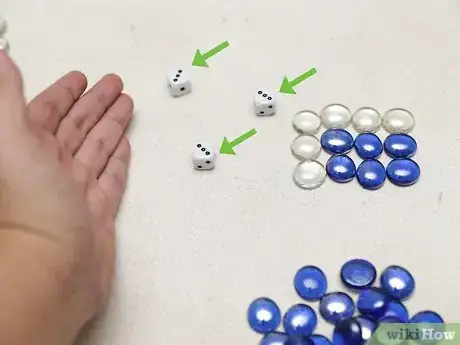



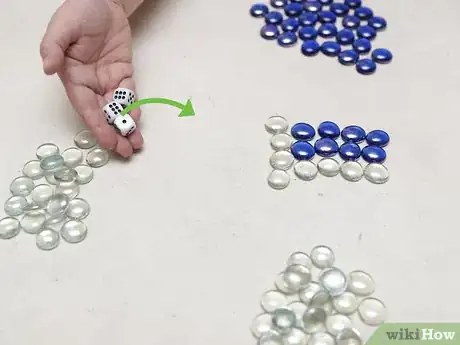


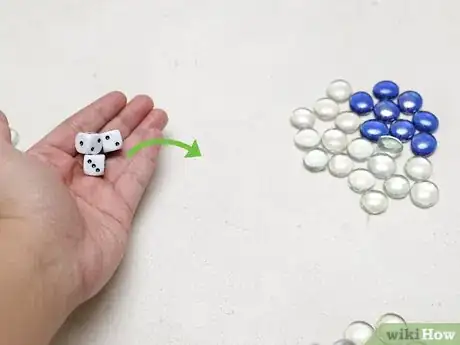






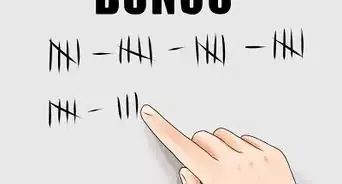
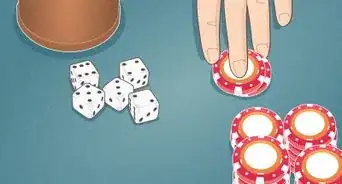

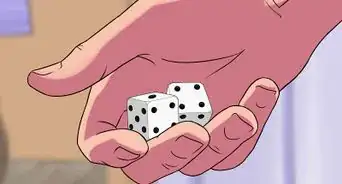

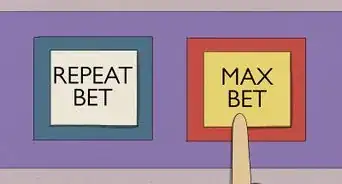
-Step-35.webp)
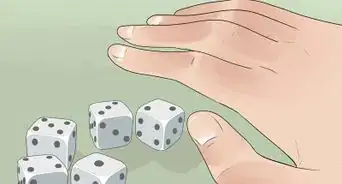
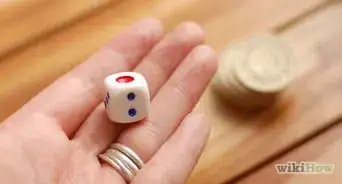
-Step-10.webp)










